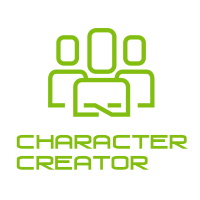$200 billion.
This industry which is dated back to the 1950s is now valued at over $200 Billion, with an estimated $100 Billion in indirect revenue. The Covid-19 pandemic did good to the gaming industry, which was booming, as gamers, new and old, stayed indoors immersed in worlds handcrafted by developers like ourselves. Boy, how things have changed.
In the early days, these simple games were coded line by line only by computer engineers. Only a handful of intellectuals had the experience and knowledge to create these basic programs. Even if we take it a bit further down the line, to my early days in game development, simple projects took months or years. Sculpting characters and coding mechanics was such a monotonous task.
Today, thanks to the incredible tools we have at our disposal, millions of developers have the power to create worlds, tell haunting stories, and immerse players in new universes. Even big volume projects are taken from concept to completion at speeds that would have seemed impossible in the past.
So, it’s just reasonable we’ll look at some of these tools. True, game engines are at the top of the list. But since we cover game engines in a different post, I’m going to exclude them from this discussion. Instead, I’m going to look at the game development tools that help me with other aspects of my game projects. Unreal Engine, CryEngine, Unity, Godot, and the like help us develop our mechanics. But as we all know, game development is about a lot more than just mechanics.
Here is our list of the best 2021 game development tools that you, and I, just can’t live without.
1. Character Creator Pipeline
In a Nutshell:
Character Creator is today’s industry standard for 3D modeling realistic characters and its CC Pipeline makes the game development process that much faster. From sculpting to animation, to export into your game engine of choice.
Why It’s Great:
In the past, creating 3D characters was prohibitively expensive – in terms of time, money, and labor. It took weeks to bring a humanoid or something else to life, from concept to sculpture to UV encapsulation and texturing.
Then came programs like Character Creator. While not the first, CCP has saved tons of resources to fill our stories with rich and realistic characters. Perhaps the most important element of the CC pipeline is the ability to be fully manipulated and ready to export into your favorite game engine or rendering software.
The Character Creator Pipeline is just that: a pipeline; One way to contain your workflow from concept to demo in record time, while bridging the gap between our other game development tools. The full pipeline enables face mocap and full-body animations right in the app or with a live link to programs like Unity and Unreal Engine. You can easily determine age, weight, body type, body tone, as well as many custom community-made sliders for sale in the market. You can combine sliders and create your own morphs from existing morphs or import new morph meshes for custom morphs. All of this is done before exporting your character’s mesh.
Cost:
Complete 3D Character and Animation Bundle: $890
Human Bundle: $699
Digital Human Creation: $299
Character Creator Pipeline: $199
Check It Out:
https://www.reallusion.com/character-creator/
2. Mixamo
In a Nutshell:
The Mixamo animation software is an online platform for characters and animations from Adobe. Mixamo animation software allows users to download animations and characters for free after registering. Users can select a character, add animation and save it as a suite then download it. In addition, users can add animation, skeletons, and 3D characters in illustrations, interactive experiences, games, and films.
Why It’s Great:
Now that you have a great character, your rugged hero, Mixamo’s huge animation sets can save you even more time bringing your character to life.
Mixamo’s auto-rig feature lets you preview and download animations with your character in minutes. The entire program is hosted in the browser, no download required, all you need is an active Adobe account.
Mixamo allows you to quickly search a repository of thousands of character animations collected from motion performers, download them, and use them however you want.
And the best part about it? It’s completely free.
Cost:
Free
Check It Out:
3. CeltX
In a Nutshell:
Games need good writing and engaging dialogue, even if it’s not the main focus. Celtx is a powerful and comprehensive scripting software with over 6 million users from 190 countries.
Why It’s Great:
CeltX enables solid flowcharts and scripts to bring your story to life.
It offers a variety of tools to make this possible, including the ability to collaborate with a partner or team in real-time, allowing them to make changes immediately as well as see each other’s changes as they occur. The interface is simple and clear. For a beginner or an expert, CeltX is a great way to write, view or see your story from a bird’s eye view.
Cost:
Game Production Subscription: $27/Month
Check It Out:
4. Blender
In a Nutshell:
Blender is an open-source suite for 3D modeling and animation. It can also be used to produce computer-generated images and films.
Why It’s Great:
Blender shouldn’t be a stranger to anyone when discussing game development tools.
If you are used to any digital workspace, Blender is very easy to understand, although it takes some time to master. Under its GNU General Public License, Blender can be used by anyone free of charge to create 3D assets, render entire scenes, or edit existing files. Thanks to the public availability, the community is huge and offers tons of free plugins from presets to face rigs.
Cost:
Free
Check It Out:
5. Incredibuild
In a Nutshell:
We can’t quite create a list of game development tools, without reserving a place in there for Incredibuild. For indie studios, AAA game empires, and everything in between – Incredibuild instantly accelerates game development tasks by up to 30x. Incredibuild’s Virtualized Distributed Processing™ technology transforms every host into a supercomputer. We put hundreds (and even thousands) of cores to work for you, harvesting idle CPUs across your network and the cloud. This distribution makes things super-fast, and our virtualization ensures that it’s seamless too.
Why It’s Great:
With all modesty, we can say that Incredibuild is a powerful solution that provides much-needed processing power for game development teams. As we all know, game development can require a LOT of processing power, and a lot of large files. With Incredibuild, long processes such as builds, shader compilation, asset creation, rendering, data conversion, texture processing, and lightmap baking are shortened significantly, making them a non-issue. In addition, Incredibuild integrates with Unreal Engine, CRYENGINE and Amazon Lumberyard, making them even faster.
As the name suggests, Incredibuild is really incredible.
Cost:
Incredibuild offers a free trial version, pricing available on request.
Check It Out:
https://www.incredibuild.com/solutions/accelerate-gaming
6. GameBench
In a Nutshell:
GameBench provides a simple solution to testing the impact of your game on various hardware.
Why It’s Great:
In the final stage of any development, you’ll be submitting your game to beta testers and preparing for its initial release. GameBench is a great way to test the impact of your program and get a good idea of the recommended and minimum system requirements so you can let your players know what they will be working with.
Cost:
There is a free version (community edition) of the program available. The full version of the program is paid for by module, meaning if you only need to test PC platforms, you only pay for that SDK. Pricing is available on a quote-by-quote basis.
Check It Out:
7. Helix Core
In a Nutshell:
Helix Core from Perforce is a program meant to keep teams on the same page, from storing source code to sharing digital assets without the hurtles you’d face with something like Google Drive or GitHub.
Why It’s Great:
Anyone who has worked on any project with a team knows extra manpower can be great, but it can also come with its own series of problems.
For me, source control is the key to managing any team projects. Helix Core makes it easy to keep versions of a project manageable, and helps track changes that have been made, without disrupting your team’s workflow.
One of the great things about Helix is its ability to sync in real-time changes that you and your team have made. Instead of pushing changes to GitHub or its alternatives, all of your source code is updated instantly, as you work. In today’s age, especially following the Covid-19 pandemic, teams are dispersed across countries, overseas, and Helix helps regardless of location.
Cost:
Perforce provides a free trial of the service, with quotes specific to your team available on their website.
Check It Out:
https://www.perforce.com/solutions/game-development
8. Houdini FX
In a Nutshell:
Houdini FX is my personal go-to for procedural generation and simulations. Houdini’s suite of products and large community makes team-based projects involving complex visual effects a breeze.
Why It’s Great:
Houdini Core offers a unique 3D animation experience to artists involved in the creation of a feature film, commercial, or video game, making it one of the most versatile game development tools on the market.
Houdini’s node-based approach provides the ability to organize networks of nodes into custom nodes that can be shared. By now, programs with visual node systems are commonplace, however, Houdini builds on this concept in a way that makes projects much more compact and organized.
With Houdini, you’ll find a quick solution to procedural simulations from smoke to building generators.
Cost:
Houdini ranges from $269-$1,999/year, though a restricted license is available for use with Unreal Engine.
Check It Out:
9. SpeedTree
In a Nutshell:
SpeedTree is used by blockbuster movies and games alike and is pretty much the industry standard for creating trees, shrubs, and other vegetation in seconds with a robust customization system.
Why It’s Great:
SpeedTree has recently made the move to PBR materials with a new workflow where you can change the color, tone and contrast of textures without leaving the application, accompanied by a new library of 150 trees and shrubs and Plants scanned using real-world examples at a North Carolina arboretum.
SpeedTree allows for hundreds of variations, and season changes in minutes.
Cost:
Licenses range from a $1,650-$4,000 one-time fee.
Alternatively, you can purchase a monthly subscription for as little as $19/mo.
The core program includes a few species of tree, and more can be purchased from their online marketplace.
Check It Out:
10. Quixel Bridge
In a Nutshell:
Quixel’s Megascan Library offers beautiful, realistic materials and 3D assets for games and films. All models have beautifully flat UV rays and perfect textures and import seamlessly into anything from 3ds Max to UE4 and more.
Why It’s Great:
Quixel has quickly become the “one-stop-shop” for many developers looking for realistic materials and 3D assets from their extensive photo-scanned library. Quixel’s Bridge makes it easy to quickly download and export these assets into the engine of your choice.
Using the bridge, you can also grab the textures and edit as needed for programs like Substance Painter or any 3D rendering software.
Possibly the best feature of Quixel is the Megascan Studio. Here you can layer materials and play with its properties to perfectly match your scene. It works in a similar way to Substance Designer, for those familiar.
Quixel’s high-quality scans make photorealism a breeze.
Cost:
Free for use with Unreal Engine or $199/Month for the Indie License
Check It Out:
Didn’t Make the Cut
Daz3D:
Daz Studio is a suite meant to render beautiful shots of customized characters with a large marketplace of 3D models to manipulate.
Why It Didn’t Make the List:
Daz3D is great for projects early on in your career. As I progressed, the demand for more realistic and dynamic characters grew, so programs like CC3 suit me better. Though, Daz is still a great resource for mid-quality animals like bears and deer.
Check It Out:
SpatialOS:
SpatialOS is an exciting new SDK, allowing for extremely large and immersive world creation. Its creators at Improbably.io have created some simple workflows to use their SDK in engines like Unreal Engine and Unity.
Why It Didn’t Make the List:
SpatialOS is an exciting concept in the realm of game development tools, but for now, it leaves some room for improvement, and I am personally excited to see where they go with it. With the gaming world focusing more and more on large open worlds, I can see SpatialOS becoming a much more talked about service in the future.
Check It Out:
https://www.improbable.io/multiplayer-networking
Krita:
Krita is a free and open-source alternative to Photoshop. It’s far from an exact clone with its own skillsets and brushes, with a large community behind it.
Why It Didn’t Make the List:
Krita is great software, and I love the thought of open source. However, the Adobe Suite is a must-have for any developer. Krita is unable to utilize Photoshop’s extensive brushes and actions available on the market.
If you’re looking for quick and dirty editing, for free, Krita is a great program.
Check It Out:
In Closing:
In this industry, I’ve seen a lot of game development tools come and go. Today’s list will likely shift and grow over time as the needs of developers change. One thing can be sure, however, studios will need to constantly keep up with the newest tools available to manage the increasing demand of gamers. These demands are why the game development tools listed here are a must-have for any studio in the industry today.












